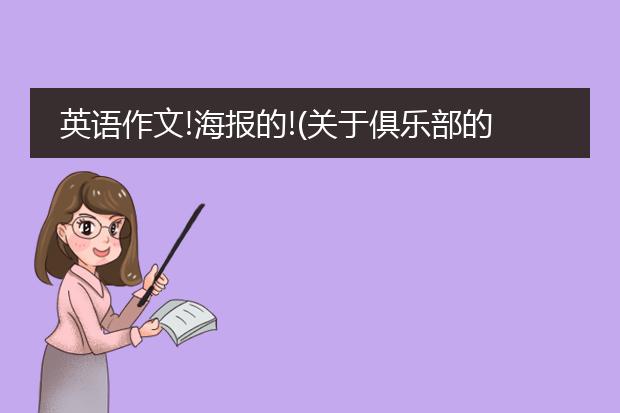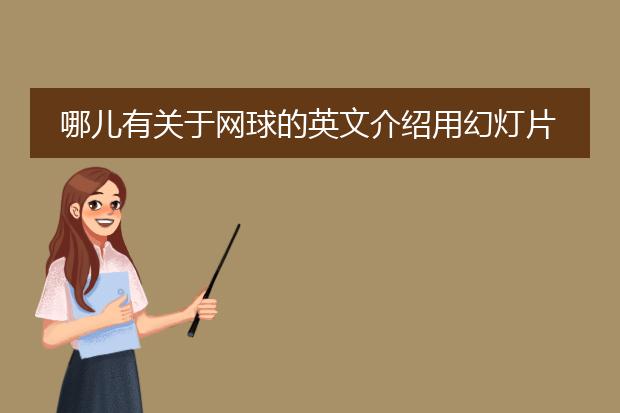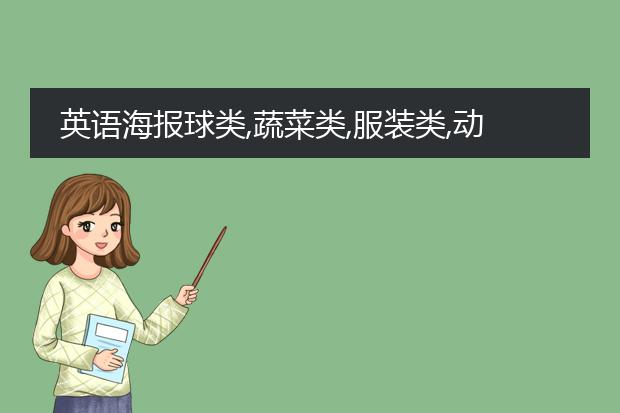网球社团的英文海报-哪儿有关于网球的英文介绍用幻灯片做的最好~~~~
英语作文!海报的!(关于俱乐部的) 海报作文,要俱乐部的,要自带翻译!

Here is a poster of the Youth Sports Club. Read it and answer the questions. Youth Sports Club Sport
of the Month: Tennis
11:00 a.m. ~ 7:00 p.m.
Ticket price for each event:
★$100 a person
★$50 a person for groups with over 15 persons
poster 海报 event 活动
这是一张海报的青少年体育俱乐部.阅读并回答问题.青少年体育俱乐部体育
本月:网球
~ 7:00上午11:00
对于每一个事件的机票价格:
★100美元/人
★50美元一组超过15人
海报活动海报事件
哪儿有关于网球的英文介绍用幻灯片做的最好~~~~

1,网球介绍
Tennis is a game played with a racket and a ball by two (as in singles) or four (as in doubles) competitors, on a rectangular court with a net strung between the midpoints of the longer sides of the court. Tennis may be played indoors or outdoors. The game ranks as one of the most popular spectator and participation sports in the world, with fans and competitors in more than 100 countries. Originally called lawn tennis to distinguish it from the sport of court tennis, from which it was derived, the game is now commonly known as tennis.
2,网球历史
Although the origins of tennis are not clear, many experts believe tennis, then called lawn tennis, was invented in 1873 by Major Walter Clopton Wingfield, a British army officer. Although Wingfield claimed that he modeled the game, which he called Sphairistiké (Greek for "playing at ball") after an ancient Greek game, many authorities believe that he adapted the principles of the popular English games of court tennis, squash racquets, and badminton for outdoor play. Early players preferred to call Wingfield's game tennis-on-the-lawn, or lawn tennis. The game was introduced to Bermuda in 1873, and from Bermuda was brought to the United States by Mary Ewing Outerbridge of Staten Island, New York. The first game of lawn tennis in the United States was probably played in 1874 on the grounds of the Staten Island Cricket and Baseball Club.
The first world amateur championships were held at the All-England Lawn Tennis and Croquet Club in Wimbledon, England (men, 1877; women, 1884). By the end of the 19th century, lawn tennis had been introduced into British colonies and other nations throughout the world. In the United States, local rules and standards for the game varied widely until 1881, when the United States Lawn Tennis Association (now the USTA) was organized to standardize rules and equipment. Under its auspices, play for the annual U.S. singles championships for men began in Newport, Rhode Island, in 1881. The national men's singles championships continued to take place annually in Newport until 1915, when they moved to the West Side Tennis Club in Forest Hills, New York. The national women's singles matches began in 1887, at the Philadelphia Cricket Club, and continued there until 1921, when they were also brought to Forest Hills. In 1978 the U.S. championships, which had been renamed the U.S. Open in 1968, moved to the National Tennis Center in Flushing Meadows-Corona Park in New York City.
3,网球规则
KNOW YOUR RULES
The rules of tennis are not very complicated but they are very detailed, so what you need is a feeling for the general rules of the game. If you want to study all the official rules, call your state tennis association for a copy of the book. For now, let's keep it simple.
Who Plays Whom?
In singles, two people play, one on each end of the court. In doubles, two players at one end play against two players at the other end.
To start a match, the players will toss a coin or spin a racquet to decide one of four things:
· the player winning the toss can choose to serve
· the player can choose to receive serve
· the player can choose which end to play from in the first game
· the player can give up the choice and make the opponent choose first (but you won't see this happen very often).
Note that a player can't pick two things: you can't choose to serve and choose the end you will start.
THE AIM OF THE GAME
There are only two principles in tennis. All of the rules are just details to support these two principles.
Principle One:
You must get the ball over the net.
Principle Two:
The ball must land in the court on your opponent's side of the net.
If you always do these two things, guess what? It is almost impossible to lose! All you have to do is get the ball over the net and into the court one more time than your opponent, and you're practically unbeatable. Sounds simple enough, doesn't it?
SERVING THE BALL
To start the game, one player (the server) stands behind the baseline, just to the right of the centre service mark (no standing on the line-that's called a foot fault.) The server hits the ball across the net into the service court on the opposite side of the centre service line. If the first serve doesn't land in the service court, it's a fault and the player gets one more chance. If this second serve is also a fault, the server loses the point (a double fault). If either of those two serves is "good" (lands in the correct service court) the receiver has to hit the ball back over the net.
If the ball touches the net when it is served but still bounces into the correct service court, a let is called and the server gets to try that serve again. If the ball hits the net and then lands outside the correct service court, the serve is a fault.
PLAYING THE POINT
Play continues until one player hits the ball into the net or outside their opponent's court, or until one player hits a shot so well that the opponent can't reach it. (This is called 'hitting a winner")
After each point in singles, the server and receiver change sides (not ends-just left to right or right to left). In doubles, the server changes sides but the receivers stay where they are and receive alternate points.
After the serve, all balls must land on or inside the baseline. They must also land on or inside the singles sideline (in singles) or the doubles sidelines (in doubles). You can hit the ball after one bounce or before it bounces (except on a return of serve, when you have to let it bounce). You must hit it before it bounces twice. Just be sure you don't reach over the net before the ball crosses onto your side-if you do, you lose the point,
KEEPING SCORE
It sounds weird but it's really very simple. Scoring in tennis starts at zero (love). The first point is 15, the second 30, then 40, then game. So, if you've won two points and your opponent has won one, the score is 30-15 if you are serving, 15-30 if you are receiving (the server's score is always called first). If the score goes to 40-40(40-all), it's called deuce. From deuce, one player must win two points in a row to win the game. The player who wins the first point after deuce is said to have the ad (advantage). The score will be called as "advantage server" (ad in) or "advantage receiver" (ad out). If the player with the ad loses the next point, the score goes back to deuce, but if the player with the ad wins the ad point, game is scored.
Players change ends of the court whenever the total of the games played is an odd number (1-0, 4-3, 5-2, 1-4, for example). A set of tennis is won when one player reaches 6 games with a lead of at least 2 games. From a game score of 5-5, a player can win the set by a score of 7-5
The Tiebreak
If the score goes to 6-6, a tiebreak is usually played: The aim here is to win 7 points with a lead of at least 2 points. (If the score gets to 7-6 or 7-5, the tiebreak keeps going until one player is 2 point ahead 12-10, for example.) The player who does that wins the tiebreak and the set with a game score of 7-6.
Most matches are best of three sets, so the player winning two sets wins the match.
Those are the very basic rules but I strongly suggest that you get a copy of the booklet The Official Rules of Tennis and read it carefully.
You'll earn a lot of respect from other players if they see that you know the rules-and play by them.
英语海报球类,蔬菜类,服装类,动物类,水果类

回答和翻译如下:
球类:
football 足球
rugby 橄榄球
basketball 篮球
volleyball 排球
tennis 网球
baseball 垒球
handball 手球
hockey 曲棍球
golf 高尔夫球
cricket 板球
蔬菜类:
pepper 胡椒 hot pepper; chilli 辣椒 agaric 木耳 cauliflower 菜花 soybean 黄豆 sweet pepper; bell pepper; pimiento; capsicum 甜椒, 柿子椒 mung bean 绿豆 tomato 番茄,西红柿 asparagus 芦笋 cucumber 黄瓜 tremella / white fungus 白木耳 aubergine, eggplant 茄子 bean 菜豆 beet, beetroot 甜菜 mung bean sprout 绿豆芽 potato 马铃薯 carrot 胡萝卜 cauliflower 菜花,花椰菜 garlic sprout 蒜苗/苔 pumpkin 西葫芦 broad bean 蚕豆 cabbage 圆白菜,卷心菜 wheat gluten 面筋 garlic 蒜 chive 细香葱 fennel 茴香 cos lettuce 莴苣 pumpkin 南瓜 marrow 嫩葫芦 melon 香瓜,甜瓜 celery 芹菜 onion
服装类:
长袜 stockings
短袜 socks
裤袜 tights
皮带 belt
领带 tie
衬衫(女用)blouse
衬衫(男用)shirt
裙子 skirt
衬裙 slip
背心 vest
睡衣 pyjamas
动物类 :
horse 马
mare 母马
colt,foal 马驹,小马
pony 矮马
thoroughbred 纯种马
mustang 野马
hippopotamus河马
mule 骡
ass,donkey 驴
ox 牛
buffalo 水牛
bull 公牛
cow 母牛
calf 小牛,牛犊
水果类:
peach桃子
Lemon 柠檬
Pear 梨子
avocado南美梨
cantaloupe美国香瓜
Banana 香蕉
Grape 葡萄
raisins葡萄干
plum 李子
apricot杏子
nectarine油桃
honeydew(melon)哈密瓜
orange 橙子
tangerine 橘子
-
 果盘绘画图片大全简单创作方法快速制作技巧
果盘绘画图片大全简单创作方法快速制作技巧2024-01-02 16:57:54
-
 小年插画图片创作方法快速制作技巧
小年插画图片创作方法快速制作技巧2024-01-02 16:57:20
-
 小年绘画作品制作技巧
小年绘画作品制作技巧2024-01-02 16:55:45
-
 小年插画图片创作方法快速制作技巧
小年插画图片创作方法快速制作技巧2024-01-02 16:55:02
-
 立春插画图片如何制作
立春插画图片如何制作2024-01-02 16:54:19
-
 立春插画图片创作方法快速制作技巧
立春插画图片创作方法快速制作技巧2024-01-02 16:53:32
-
 粉色樱花矢量元素
粉色樱花矢量元素2025-04-29
-
 粉色樱花矢量插图
粉色樱花矢量插图2025-04-29
-
 樱花花瓣透明背景插画
樱花花瓣透明背景插画2025-04-29
-
 樱花花瓣透明背景元素
樱花花瓣透明背景元素2025-04-29
-
 单片樱花花瓣元素
单片樱花花瓣元素2025-04-29
-
 单片樱花花瓣素材
单片樱花花瓣素材2025-04-29
-
 樱花花瓣飞舞元素
樱花花瓣飞舞元素2025-04-29
-
 樱花花瓣透明背景素材
樱花花瓣透明背景素材2025-04-29
-
 樱花花瓣透明背景插图
樱花花瓣透明背景插图2025-04-29
-
 樱花花瓣粉色元素
樱花花瓣粉色元素2025-04-29









 扫描二维码添加客服微信
扫描二维码添加客服微信
 扫描二维码关注
扫描二维码关注




